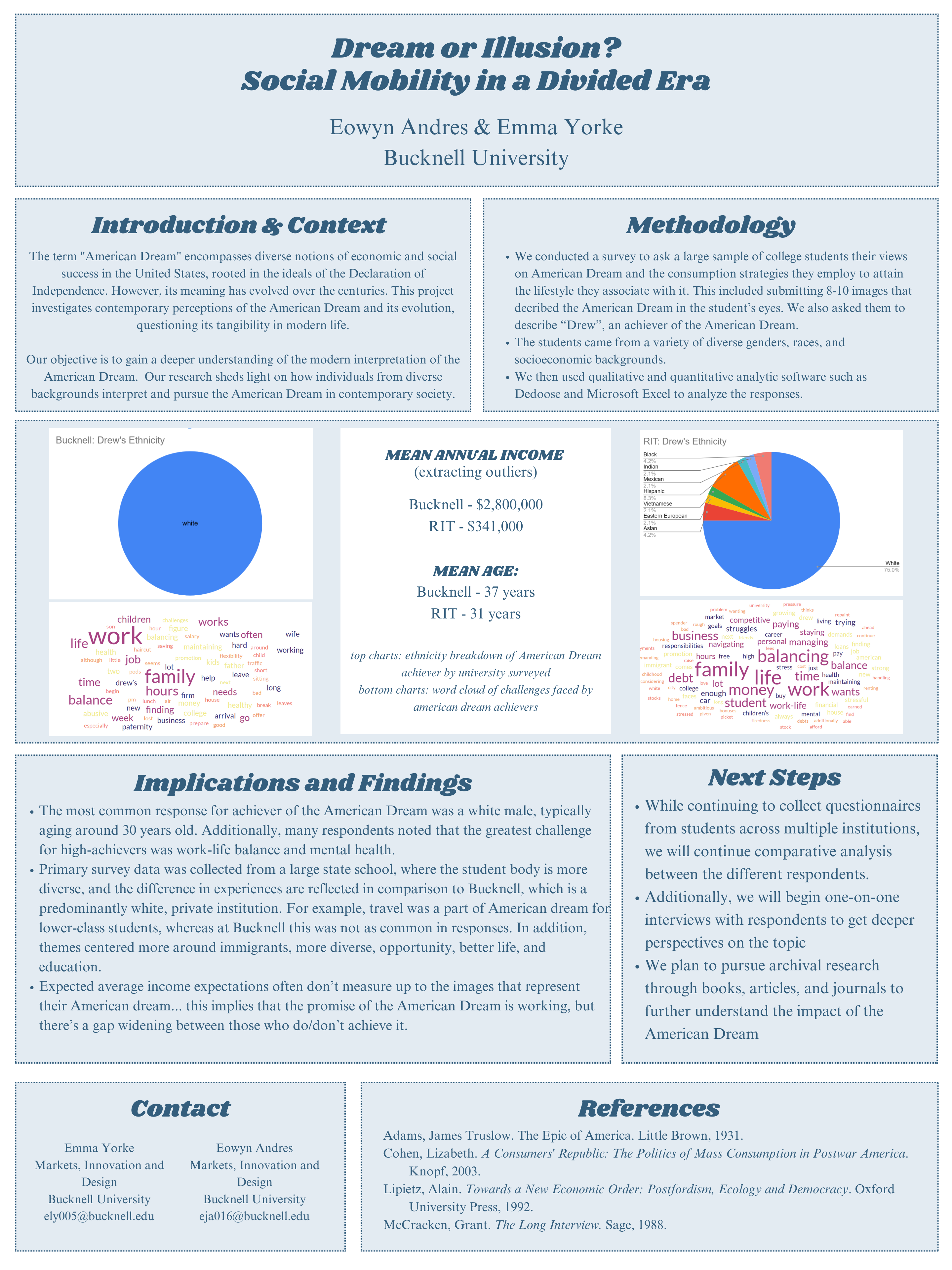
Dream or Illusion? – Social Mobility in a Divided Era
Author:
Emma Yorke ’26Co-Authors:
Eowyn AndresFaculty Mentor(s):
Gulay Guzel, Markets Innovation and DesignFunding Source:
Undergraduate ResearchAbstract
The “American Dream” embodies evolving ideals of economic and social success in the U.S., rooted in the Declaration of Independence’s promise of “life, liberty, and the pursuit of happiness.” This research examines contemporary perceptions of the American Dream and its attainability today, focusing on how socioeconomic background, race, and gender shape individual interpretations of success and opportunity.
Drawing from historical and sociological frameworks, we integrate perspectives from American studies, social mobility research, and economic inequality discourse. A questionnaire conducted among college students from diverse backgrounds explored their perceptions of the American Dream and key attributes linked to achieving it. Qualitative coding identified recurring themes and emotions, while quantitative analysis examined correlations between responses and socioeconomic status.
Preliminary findings indicate that historical patterns persist, with white males often seen as the quintessential embodiment of the American Dream. However, views on attainability vary due to rising living costs and workplace diversity efforts. Our analysis revealed differences in expected income levels and lifestyle aspirations—some participants included vacations as part of their dream, while others omitted them, considering them either an unrealistic luxury or too normalized to be a goal.
Future research will expand data collection through in-depth interviews and archival analysis to refine these trends. By analyzing modern interpretations of the American Dream, this study contributes to discussions on social mobility and economic opportunity, offering insight into how diverse individuals navigate and redefine this evolving ideal.